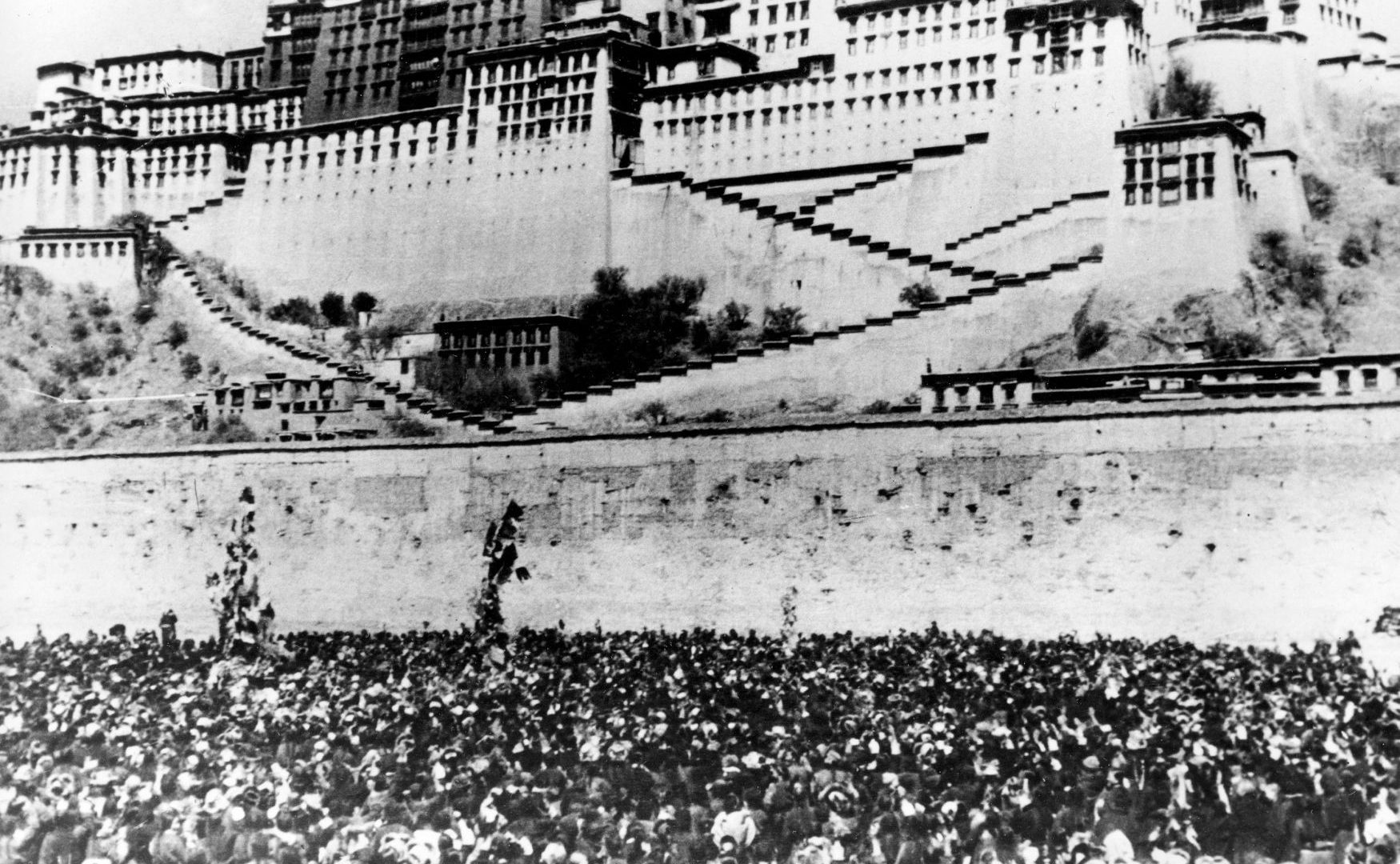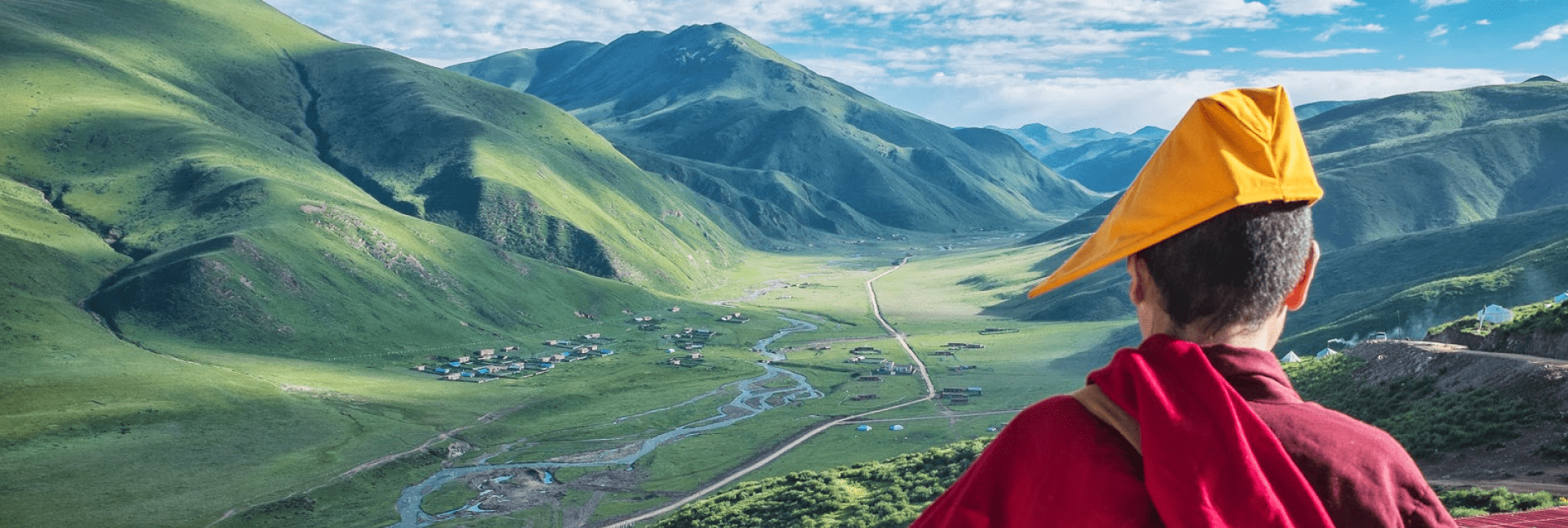
10 March: the Story of an Uprising
The story of a Tibetan refugee’s family by Kalsang
On 10 March 1959, hundreds of thousands of Tibetans had banded together around the Norbulingka (the summer palace of His Holiness the Dalai Lama, in Lhasa) to revolt, in defiance of the Chinese invasion, a decade earlier. This peaceful protest was violently crushed by the Chinese.
China’s invasion of Tibet began a decade before the Uprising day. Communism had barely gained full control of mainland China when it turned its voracious appetite on Tibet – without any provocation. Troops from the People’s Liberation Army (PLA) invaded eastern Tibet and captured Chamdo, the headquarters of the Governor-General of Eastern Tibet on 19th October 1950. On 11th November 1950, the Tibetan government protested against Chinese aggression to the United Nations Organisation, but the Steering Committee of the General Assembly moved to postpone the issue and gave Tibet no protection.
His Holiness the 14th Dalai Lama was barely sixteen years old but, given the grave crises in his country, he promptly assumed full spiritual and temporal powers as the Head of State. A year later, a Tibetan delegation went to Beijing to hold talks on the invasion but was forced, by threats of more military actions, to sign a treaty called the ‘17-point Agreement on Measures for Peaceful Liberation on Tibet’. This was a very unequal treaty. Whilst it seemed to assure the Dalai Lama full control over domestic affairs of Tibet, it actively facilitated further infiltration of Tibet by the Chinese. Subsequently, there was violation of every article of the treaty and sheer disregard for the increasing resistance by the Tibetan people. This forceful occupation was marked by systematic destruction of monasteries and suppression of religion, with widespread imprisonment and massacre of innocent men, women, and children.
Tibetan resistance to the Chinese occupation steadily built up over several years, especially in eastern Tibet, with revolts in several areas in 1956. There was also a simmering rebellion in Lhasa in December 1958, which was promptly crushed by the PLA, threatening to bomb the city if law and order was not maintained.
The Uprising Day was triggered by fears of a plot to assassinate or abduct the Dalai Lama. According to the Dalai Lama’s memoirs, the Chinese General Chiang Chin-Wu invited him to a theatrical performance to be held at the Chinese military headquarters. The date of 10th March 1959 was confirmed only a day before, with strict instructions to maintain ‘absolute secrecy’ about this plan and to come without his Tibetan bodyguards in attendance. Some members of the Kashag (Governing Council) became suspicious and this triggered a nationwide protest within Tibet, culminating in the Tibetan National Uprising in Lhasa.
300,000 loyal Tibetans banded together, surrounding the Norbulingka Palace, on March 10th, protesting against the Chinese occupation, and preventing the Dalai Lama from leaving the palace for Beijing. On March 12th, thousands of women led by Pamo Kusang gathered to protest non-violently in front of Potala Palace in Lhasa on the ground called Dri-bu-Yul-Khai Thang.

Protest gathering at the stone lion’s (do senge lam) crossing in Lhasa, 10 March 1959
This started the movement for the Tibetan Women’s Uprising Day for independence, followed by another similar gathering of women on March 14th led by Gurteng Kunsang, a member of the aristocratic Kundeling family and mother of six, who was later arrested and executed by the Chinese. Whilst the Chinese prepared their artillery to crush the Uprising, the young Dalai Lama was safely evacuated from Lhasa, and taken to neighbouring India for refuge. Two days later, fighting broke out in Lhasa, with brave acts of resistance shown by Tibetan rebels but, unfortunately, they were hopelessly crushed by the Chinese military strength. Norbulingka Palace came under attack, on March 21st and thousands of men, women and children still camping outside the palace were slaughtered by the Chinese. In the aftermath of the Uprising, the PLA brutally cracked down on the Tibetan resistance, executed the guards of His Holiness and destroyed Lhasa’s major monasteries with massacre of inhabiting monks and nuns.

Dalai Lama’s escape to Dharamsala in India, 1959
Tens of thousands of Tibetans followed their leader to India where His Holiness has long maintained a Government-In-Exile in the foothills of the Himalayas. I cannot imagine the plight of my late father in making preparations for his extended family to leave their home and country, for this uncertain getaway, following the Dalai Lama into a foreign country – on foot, across the Himalayas! When the news of the Fall of Tibet and the escape of the Dalai Lama arrived from Lhasa, an all-important divination by the region’s Chieftain came out in favour of those still in Lhasa leaving immediately, towards the south. The exodus was then planned in two groups, but a dilemma hit my late father – his family belonged to the larger group, whereas my late mother’s family were part of the smaller group. My late mother requested him to consult his Gesar Divination, as usual for difficult matters. The divination decisively indicated “Go with Ringpa”- my mother’s family group. Sadly, the larger group was mercilessly ambushed and driven back by the PLA. Hundreds of those left behind were imprisoned, tortured, and slaughtered by the Chinese.
As a very young refugee girl in the Tibetan Homes Foundation, Mussoorie, in India, I have a faint recollection of plays being enacted on this day, about the events leading up to the Uprising Day and its aftermath in Tibet. I never really understood what was happening, but simply enjoyed clapping my hands every time a young boy in a monk’s dress entered and booing at the boys in military outfit.
March 10th should be remembered, every year, as a day of human rights tragedy. Let us commemorate this 62nd year in exile, in remembrance of all the Tibetans who lost their lives during the Uprising and those who died under Chinese cruelty in the ensuing six decades of Occupation, including 156 tragic cases of self-immolations up to the end of 2019.
Let us pray for the long life of His Holiness the 14th Dalai Lama, and for the well-being of Tibetans in Tibet, who continue to be discriminated against and oppressed in their own country by the Chinese. China has not only invaded Tibet through sheer intimidation, cruelty, and violence, but now aims to wipe out Tibetan history, religion, and culture.
Finally – on behalf of all the Tibetans, I thank all those, across the world, who continue to support our cause, and pledge that we strengthen our resolve for Freedom in Tibet.
Kalsang
March 2021
Kalsang works with the NHS as a consultant obstetrician and gynaecologist and also volunteers with Free Tibet. Her parents and four siblings escaped Tibet in 1959.
This piece originally appeared in the newsletter of Tibet Support Group York and has been reproduced here with their and Kalsang’s kind permission.

